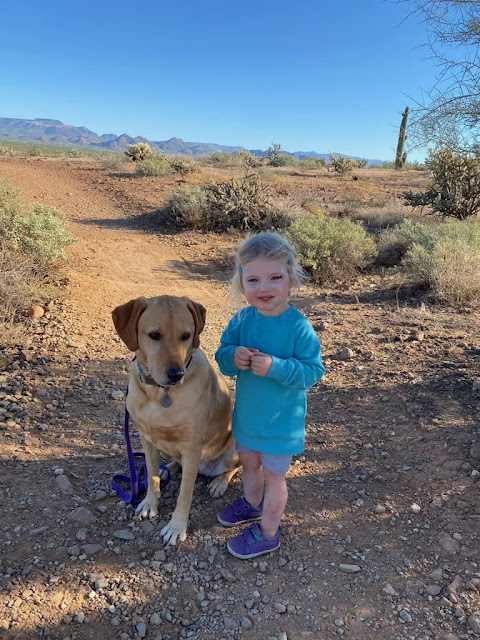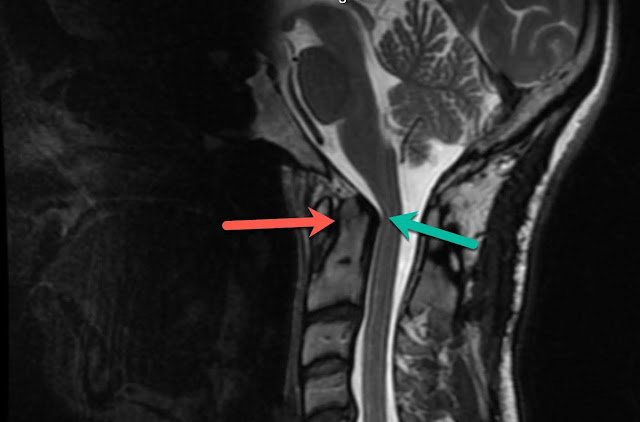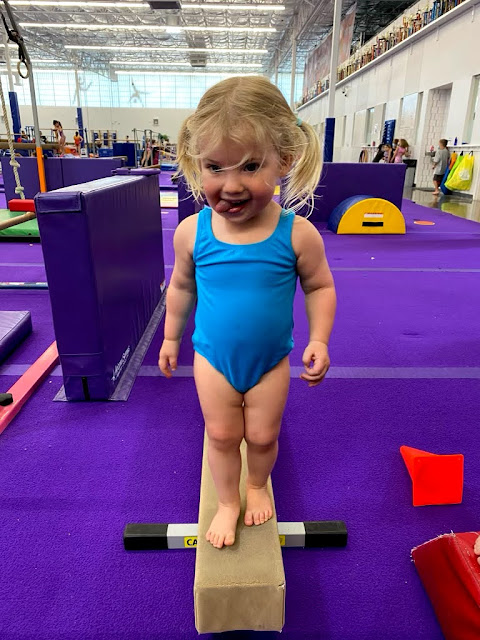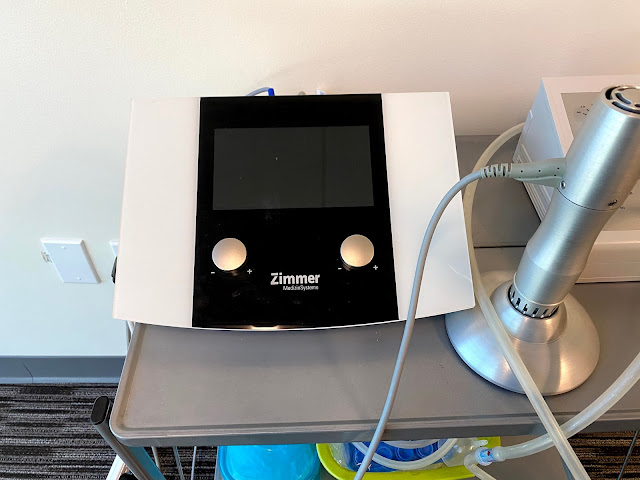A quick update from my last post in July. Did Craig and I make it NYC for my brain scan? We came close! We were visiting my family in MA at the time, prepared for our first overnight from Ryan. We drove to the airport, we boarded the plane, we sat on the plane for two hours, the flight got cancelled due to extreme weather, we got off the plane, we drove home. Hah. So we are still working on that.
Also, I don't have any real update on my stem cells. We're hoping Dr. Centeno's clinic in Grand Cayman will be able to reopen in the spring and we'll finally get down there for re-injection.
Now jump ahead. This week, I'll be four weeks post-op. You didn't think I would make it a whole year without going under the knife, did you?
After our trip to San Francisco in early October to see Dr. Peled, I decided it was worth trying a third occipital nerve surgery. This time, Dr. Peled would be targeting both my right and left lesser occipital nerves. If you're keeping track, he had already decompressed both during my first surgery with him in 2017 and had gone back in to cut the left during my second surgery a few months later. My decision to move forward with this latest procedure was based on the temporary (diagnostic) relief from the nerve blocks he performed this fall. But why hasn't this relief I seem to get from the blocks translated to lasting relief from previous nerve resections and excisions? A valid question.
As I mentioned in my last post, Dr. Peled had explained to Craig and I that there was a small but entirely plausible chance (something he sees in about 10% of patients) that I could have an aberrant lesser occipital nerve branch located next to my trapezius muscle (instead of behind the sternocleidomastoid, where it's traditionally found). Nothing is a guarantee, of course, and I can understand how the thought of a somewhat exploratory surgery seems....aggressive? But the reality is, until you are living and breathing this pain every waking and sleeping moment of your life for over a decade, you just can't fully appreciate what I would do to feel relief. Before every surgery or procedure I've had, I'm inevitably met with reactions from friends and family that go something like this: "Oh I'm so sorry you need another surgery." I understand the knee jerk sentiment, but please don't ever be sympathetic toward's someone's hope. Just say whatever you think you could that can give them more of it.
Between COVID and a toddler at home, traveling for medical procedures is a little extra challenging these days, but thanks to my mom, Ryan was in the best hands while we Craig and I were in California. Now, almost a month later, she tells us on a daily basis "I missed you when you were in San Francisco." Cue heart melting.
Anyway, our trip was short as we could make up. Out on a Tuesday, pre-op on a Wednesday, surgery on Thursday, post-op on Friday and straight to the airport home.
Surgery took a couple of hours but I came out of it relatively comfortable, as is typically the case. Prescriptions filled as always but no meds needed to control surgical pain. And most importantly, we were so relieved to hear that Dr. Peled had indeed found (and cut) those aberrant branches on both the left and right sides.
It's an incredibly validating feeling to know there was some clear damage to those nerves. Now we just wait, heal, and pray to every higher power that a reduction in pain will follow. Recovery from these surgeries can be a bit of a rollercoaster. Everyone is different, of course, but it's not uncommon to experience a "honeymoon phase" in the first few days post-op, as everything is pretty numb. Then the nerves start waking up and surrounding nerves tend to get a little angry, going to into overdrive to take over the job of their compromised neighbors. This phase can last weeks (sometimes months) but Dr. Peled has reminded me that the 3-6 month period is generally when the most lasting relief is felt. Patience, patience, patience.
Here's a look at my incisions the morning after surgery.
So how's my recovery going? Well, see above. I'm optimistic (I have to be) but this last month has been really challenging...no way around that. The actual spots where the nerves were cut feel decent, but pain at the base of my skull, over the top of my head, deep into my temples, over my eyes, and across my forehead has just been so intense and unrelenting. At times, unbearable. Then again, what does unbearable even mean when not bearing it is simply not an option.
I have to take it easy from working out for at least another couple of weeks, but in the meantime I'm able to continue my daily walks and have gotten back into my early morning cold plunges in an attempt to help regulate my nervous system.
I've been trying to get into a more consistent breathing exercises routine too, but it doesn't come easy to me. The voice I'm following along to is telling me to focus on my inhale and exhale. To be present in the moment. That this moment you're in is all you have. That worrying about the pasts breeds depression, that worrying about the future breeds anxiety. I get all of that. But what if it's present moment that is suffocating me? When it's 1:15 on a Wednesday afternoon and I'm feeling absolutely suffocated by the physical pain I'm in. Where does that leave me?
Every single night when we're getting into bed, Craig asks me "Can I get you anything?" He means it too. My head is usually already "tucked in" with its ice packs so I tell him no, thank you, that I'm okay. But a few nights ago, before he could finish the second half - "Wake me up if you need anything" - my eyes swelled with tears. Oh boy, here we go. They fall hard and fast. There is nothing you or anyone else can get me right now and that's why this is so hard. Imagine falling asleep drenched in pain that is taking your breath away. Hoping with every ounce of your being that something in your body shifts overnight so that tomorrow can start differently, and then crushed when you wake up and realize it hasn't. Day after day after day after day.
That's a glimpse into this reality that I've always hated sharing because I never want it to detract from my optimism. Not for you, but for me. In the thick of this pain, I know that the voice inside my own head matters, which is why I force myself to keep looking forward. But hope and suffering are not mutually exclusive. On especially hard days, my undeniably empathic two-year old looks at me, tilts her head, and asks with concern in her sweet little voice "Mom, you feelin' good?" She already recognizes the look in my eyes, the strain in my voice, the rubbing of my temples. And holy shit does that break my heart. I imagined one day talking to Ryan about Mommy's head but never in a million years did I think it would be so soon. But I try to appreciate the compassion and resilience it's teaching her as much as I appreciate the love and light she shines on my darkest moments.
And let's face it, if I'm not feeling good, how am I ever going to keep keep up with this?














